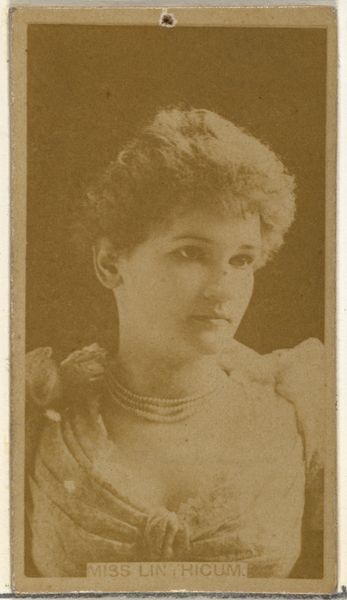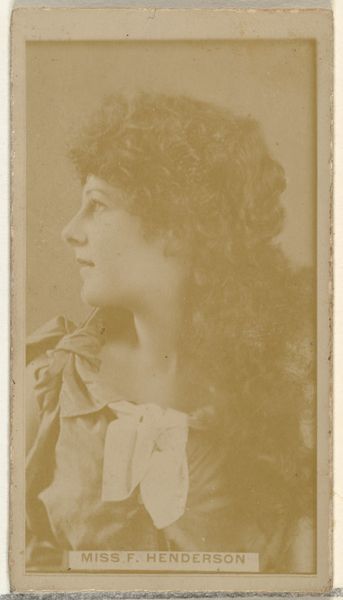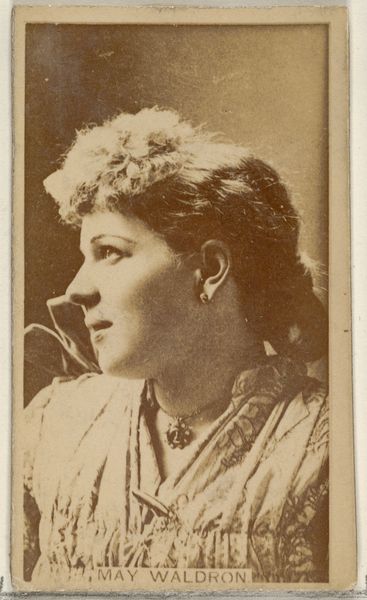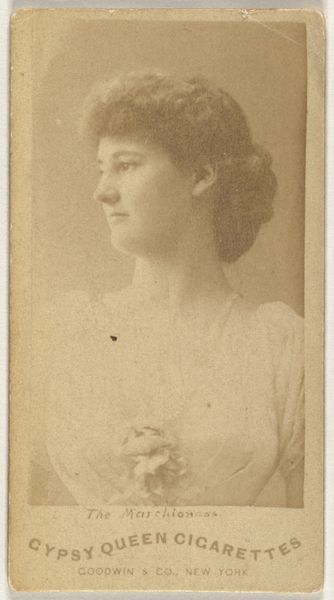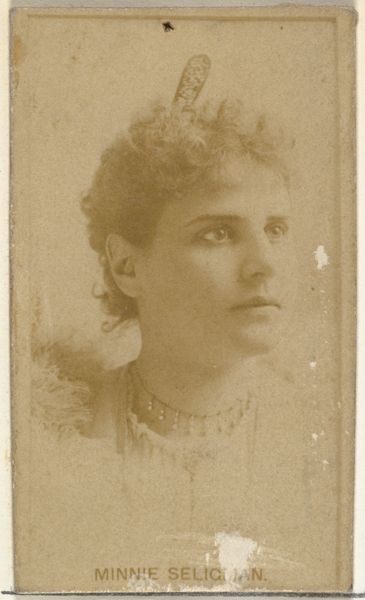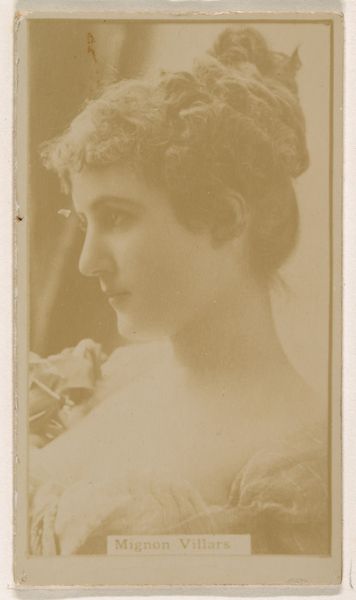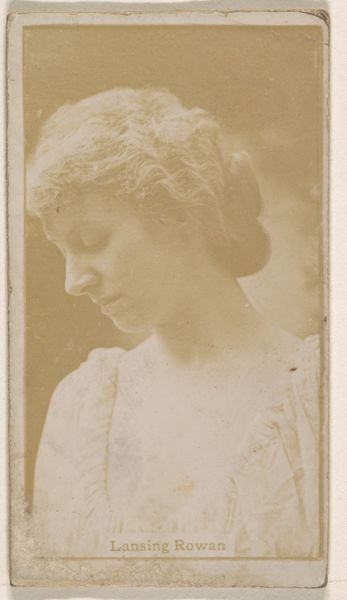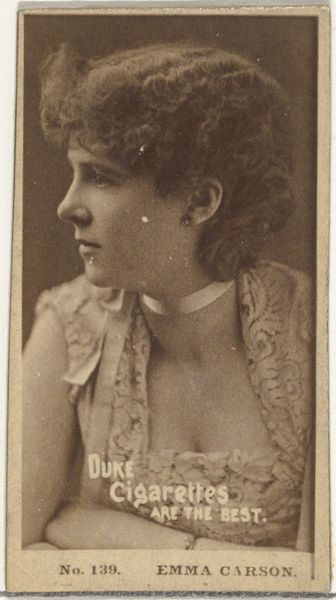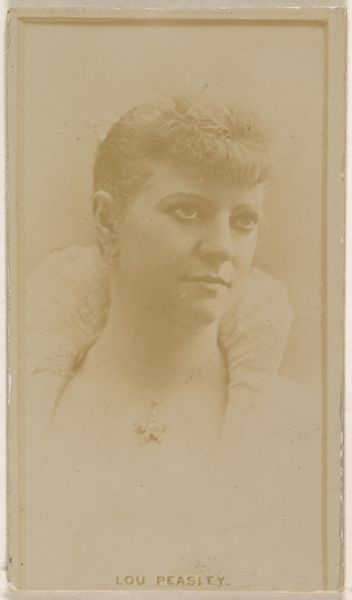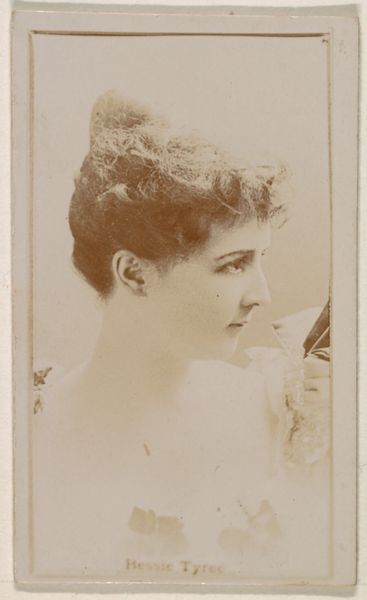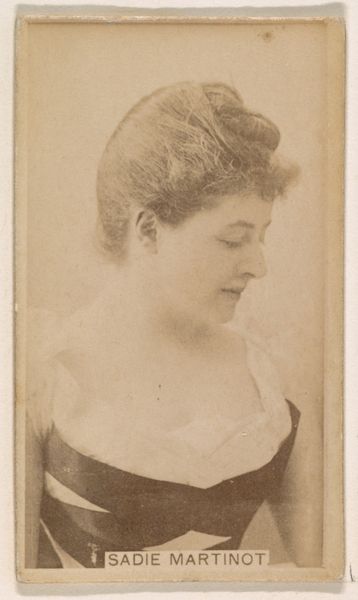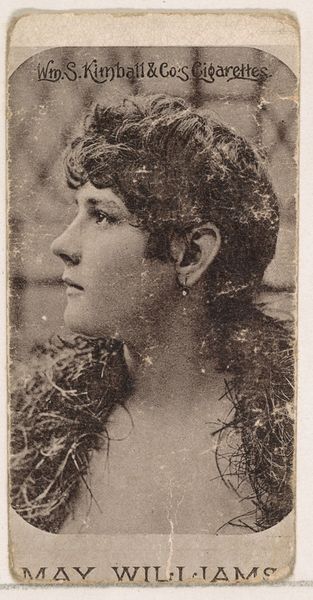![[Actress in profile], from the Actors and Actresses series (N145-8) issued by Duke Sons & Co. to promote Duke Cigarettes by W. Duke, Sons & Co.](/_next/image?url=https%3A%2F%2Fd2w8kbdekdi1gv.cloudfront.net%2FeyJidWNrZXQiOiAiYXJ0ZXJhLWltYWdlcy1idWNrZXQiLCAia2V5IjogImFydHdvcmtzL2JhNDcwMmY4LTVmNmYtNDI0ZS1iZTRjLTc4MTk4ZGVkZmU5OS9iYTQ3MDJmOC01ZjZmLTQyNGUtYmU0Yy03ODE5OGRlZGZlOTlfZnVsbC5qcGciLCAiZWRpdHMiOiB7InJlc2l6ZSI6IHsid2lkdGgiOiAxOTIwLCAiaGVpZ2h0IjogMTkyMCwgImZpdCI6ICJpbnNpZGUifX19&w=3840&q=75)
[Actress in profile], from the Actors and Actresses series (N145-8) issued by Duke Sons & Co. to promote Duke Cigarettes 1890 - 1895
0:00
0:00
drawing, print, photography
#
portrait
#
drawing
#
photo restoration
# print
#
figuration
#
photography
#
portrait reference
Dimensions: Sheet: 2 11/16 × 1 3/8 in. (6.8 × 3.5 cm)
Copyright: Public Domain
Curator: At first glance, I see the romantic sensibility captured in the hazy, almost dreamlike sepia tones of this image. There’s an undeniable allure in the woman's gaze. Editor: It certainly has a captivating presence. We are looking at "[Actress in profile], from the Actors and Actresses series (N145-8) issued by Duke Sons & Co. to promote Duke Cigarettes," dating from 1890-1895. It's a photographic print held at the Metropolitan Museum of Art. What do you think is important to know about this work from your perspective? Curator: From a social and cultural standpoint, these were incredibly popular collectibles included with cigarette packs. It served to democratize art appreciation. Instead of exclusive gallery spaces, art infiltrated daily lives through commerce. Editor: And from a materialist viewpoint, think about the production involved in such wide distribution. The machinery, paper, and the photographic processes of mass duplication made art available for working class consumption, embedded directly within the commodity culture. Each card meticulously printed and placed inside the packaging... a constant reminder of consumer culture. Curator: Absolutely. The actors and actresses featured gained additional celebrity through these cards. It also cemented associations between their glamour and this cigarette brand, reinforcing its aspirational value. Editor: Exactly. The portrait becomes another layer of advertising within an evolving landscape of marketing techniques during a critical phase of industrial production, contributing and also reflecting how the theater, the mass media, and industry intersected in shaping an image economy. Curator: A powerful way to distribute images and establish certain actors and actresses in popular memory. One must wonder about their awareness or agency in how their images are used commercially. Editor: Absolutely, considering these photographic prints, small and mass produced, not just as aesthetic objects but as intricate pieces within a complex network of labor, image production and distribution. It gives one pause to think how things have changed and also, how much they haven’t. Curator: A remarkable lens for viewing the cultural landscape of the late 19th century! Editor: Indeed. The layers of social commentary wrapped up in something as simple as a cigarette card are quite remarkable.
Comments
No comments
Be the first to comment and join the conversation on the ultimate creative platform.
